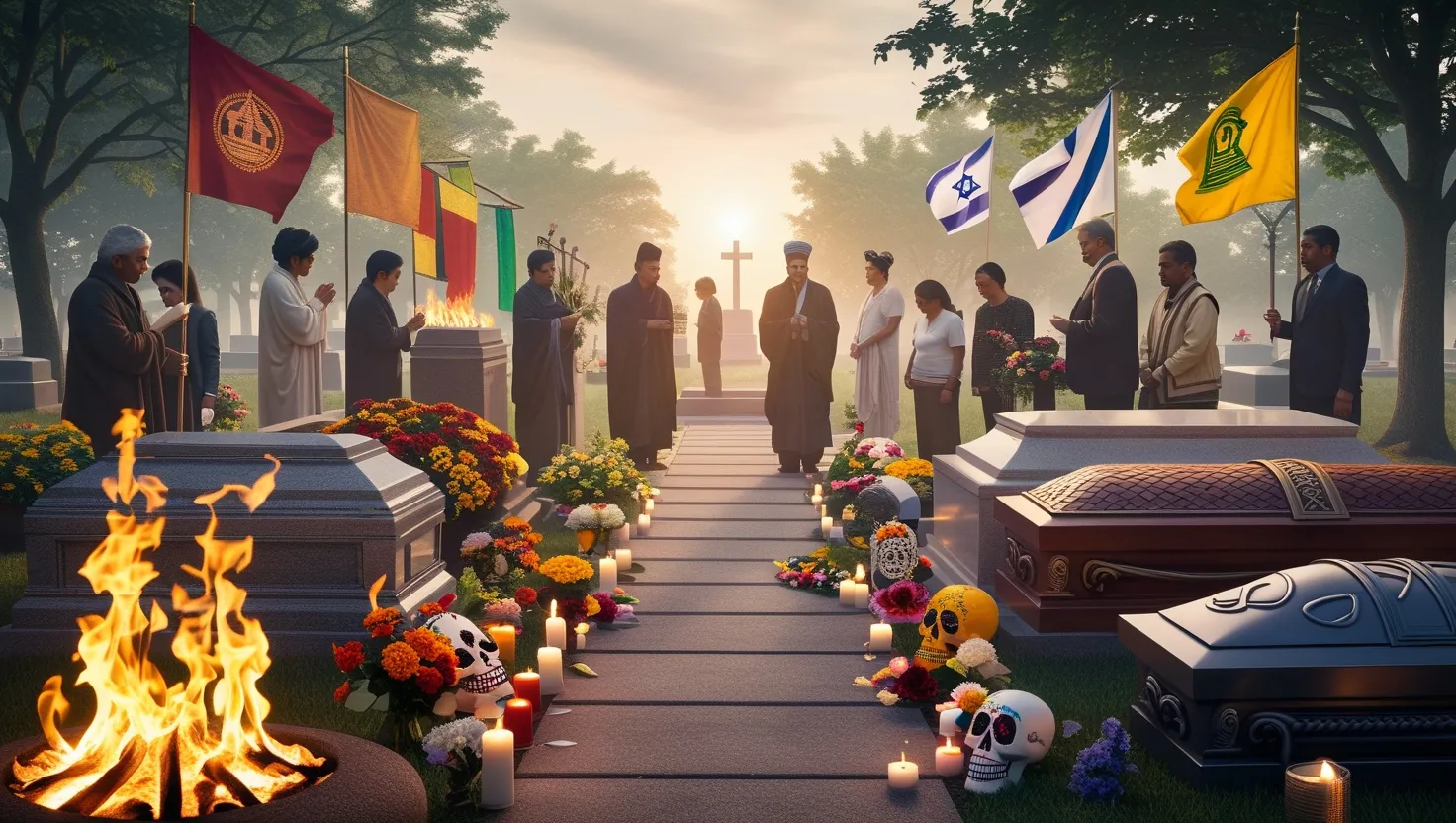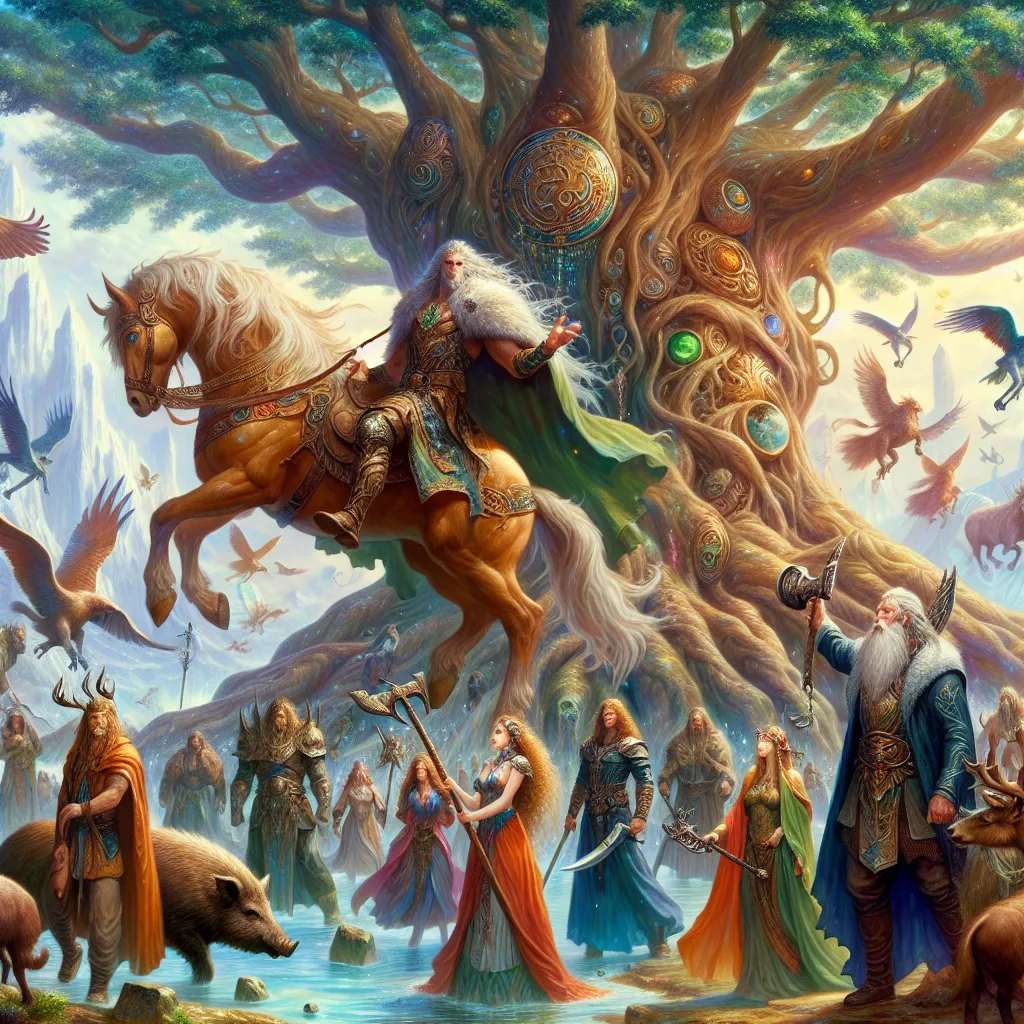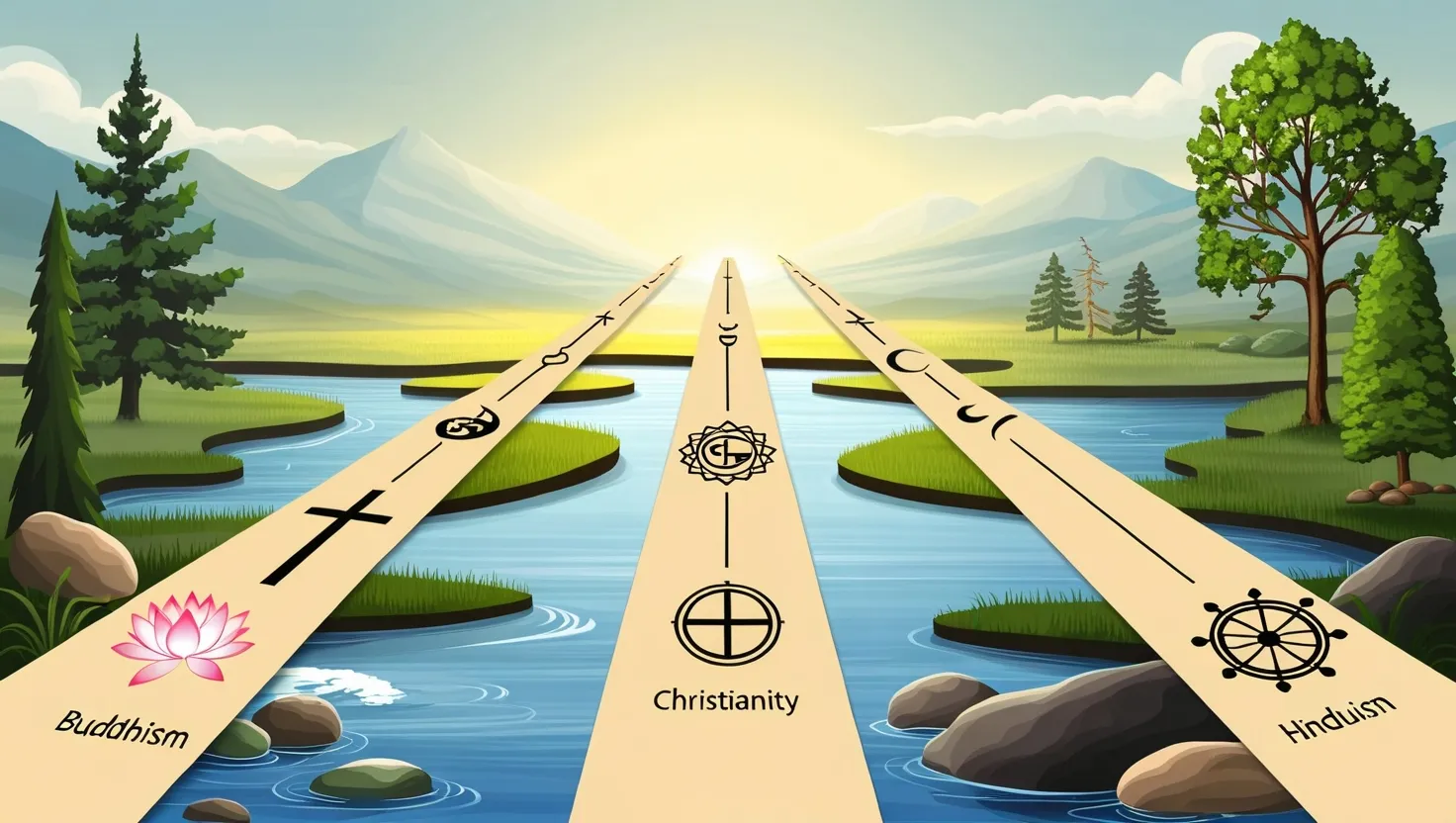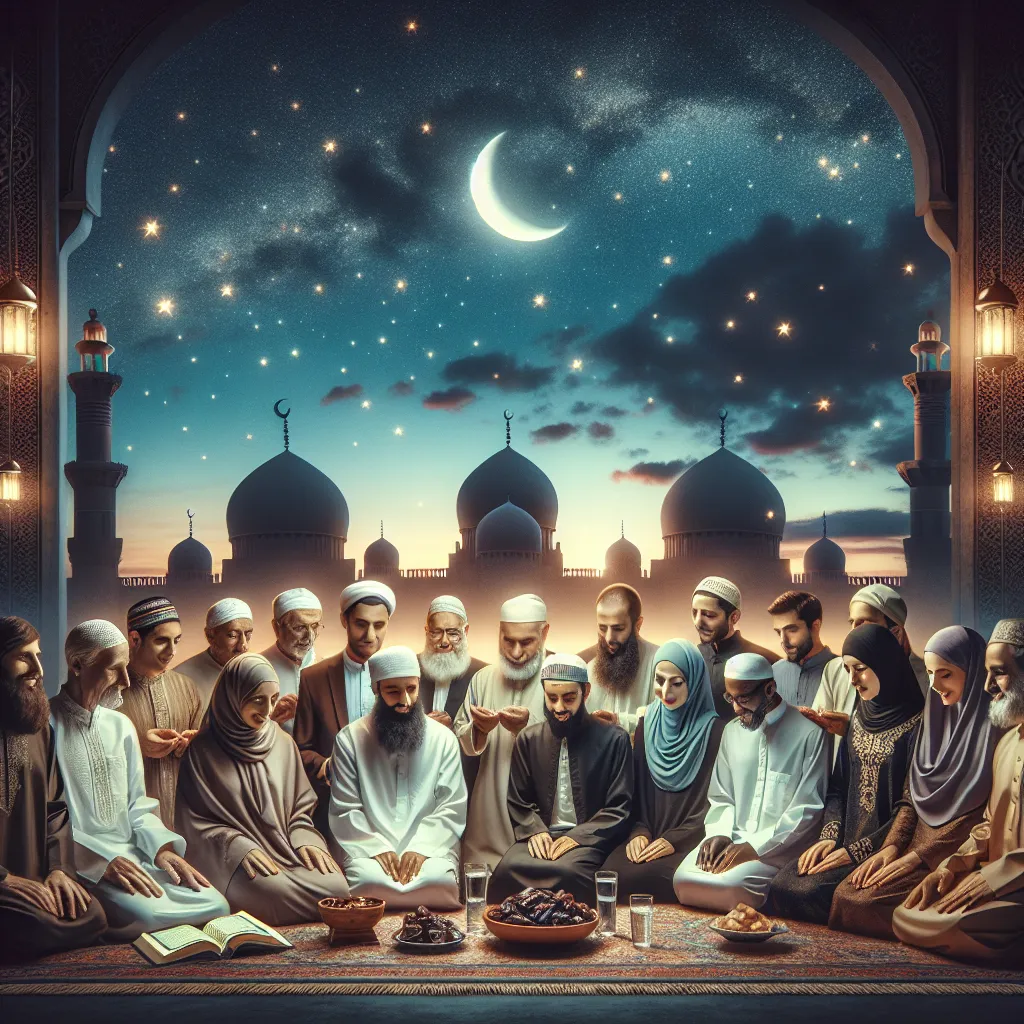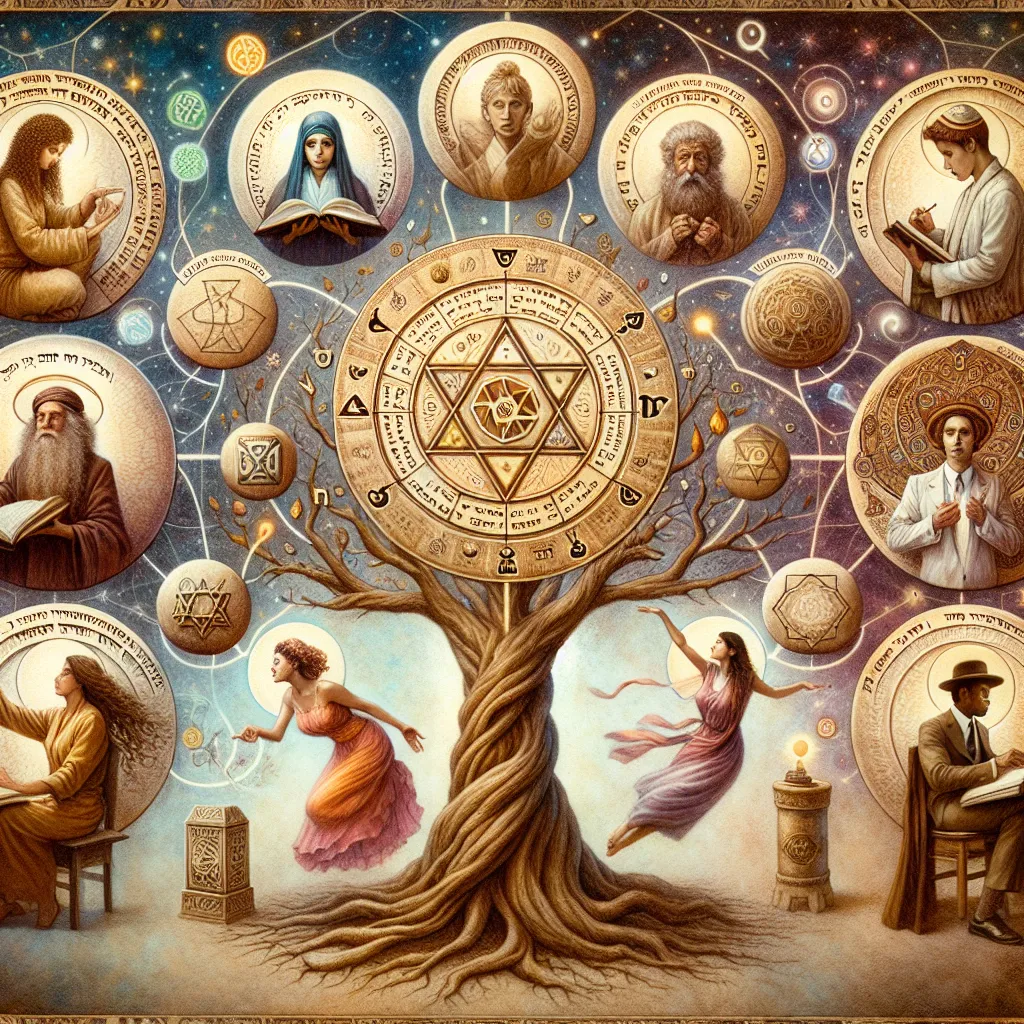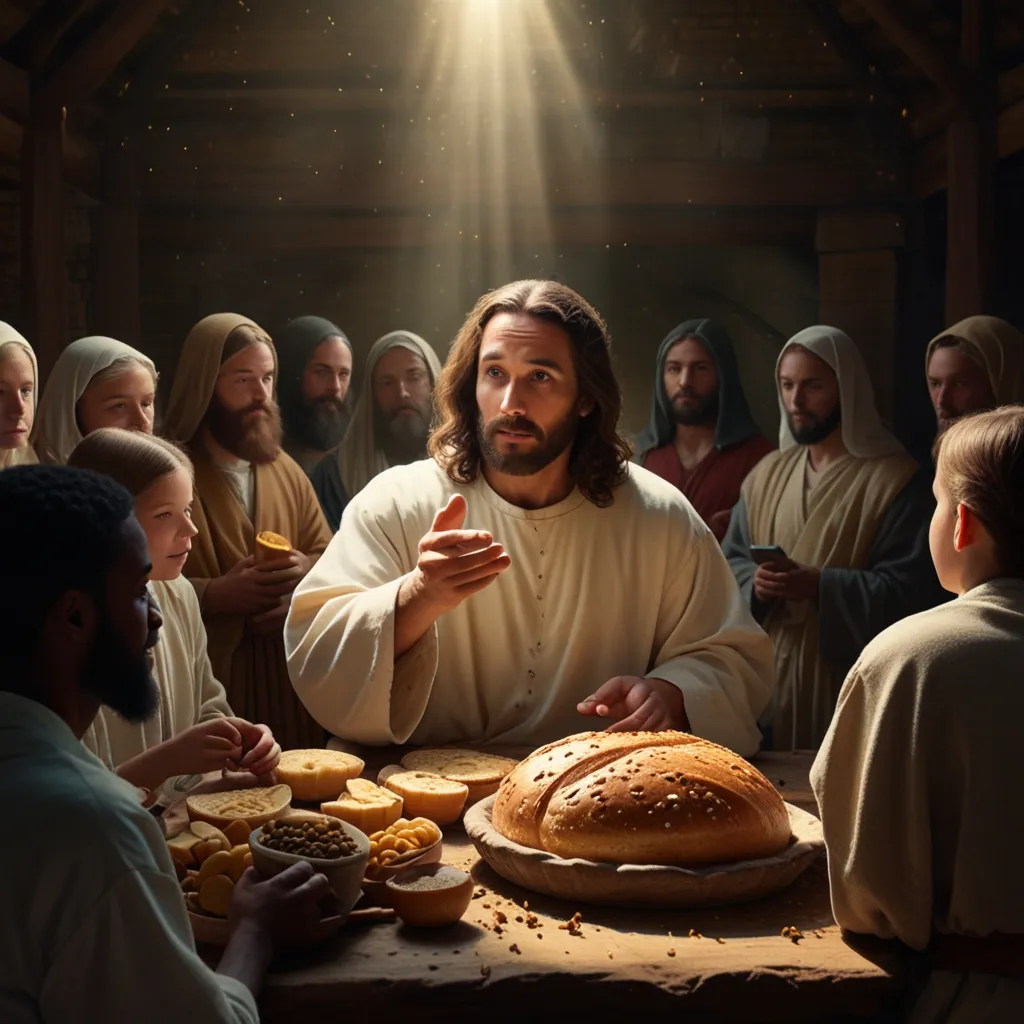Death is never a distant abstraction; it touches each of us, yet the ways we respond are shaped by centuries of tradition, belief, and imagination. Across cultures, the end of a life is rarely met with silence or mere resignation. Instead, communities build rituals around it, offer vivid stories, and carve out spaces for grief and remembrance. Even in the most personal sorrow, we find ourselves drawn into ancient patterns of meaning—sometimes comforting, sometimes challenging, always nuanced.
How do we find our footing in those first hours after loss, or weeks later when life seems to demand a return to normal? I’ve spent much time reflecting on how different religious cultures answer these questions, and I’m often struck by the peculiar beauty and logic of practices that might seem foreign or even unsettling at first glance.
When I consider Hindu Antyeshti, I can’t help but be reminded of how the visible drama of cremation, with its sacred fire, asserts the impermanence of the body. Here, grief isn’t just a private ache; it’s woven into a structured series of rituals that stretch over nearly two weeks. People gather, not simply to mourn, but to assist the soul’s journey—chanting, making offerings, and at the end, shifting the community’s focus away from the rawness of loss towards the idea of rebirth or liberation. There’s a pragmatic element to this rhythm: it gives mourners something to do, a schedule when the rest of the world might feel as though it’s stopped. It’s a lesson in how ritual can hold a family through the unimaginable, transforming helpless grief into active, purposeful care for both the living and the dead.
“The life of the dead is placed in the memory of the living,” Marcus Tullius Cicero once wrote. This assertion feels particularly apt watching how Hindu rites link individual mourning to cosmic cycles. Why should grief be allowed to remain formless, threatening to overwhelm? By carefully marking each day and each step, the community both acknowledges the sorrow and insists on its transformation.
Tibetan Buddhism offers, perhaps, the most explicit training for the moment of death. The Phowa practice, with its idea of “mind transference,” encourages the dying and their loved ones to meet death not as an enemy, but as a transition to be approached with awareness. In the intermediate Bardo state, practitioners say, the mind is unmoored—capable of either confusion or clarity. That’s why survivors engage in merit-making: charitable acts, prayers, and rituals designed not only to aid the departed but also to help those left behind loosen the grip of attachment. “Grief is the price we pay for love,” it’s been said, but Tibetan teachings invite us to see grief itself as another attachment—neither shunned nor indulged, but understood with compassion.
Have you ever wondered what it would be like if our culture didn’t associate mourning primarily with sadness? Día de Muertos in Mexico flips conventional expectations entirely. Rather than keeping sorrow behind closed doors, families open them wide—building bright altars at home, decorating graves, and telling stories that mix laughter with tears. The marigolds and sugar skulls aren’t just decorations; they’re invitations for the departed to join the celebrations, reminders that love and memory transcend the border between living and dead. There’s an odd relief in seeing how humor is used here: jokes, music, and even satirical poems directed at death itself. In this world, death isn’t sanitized or hidden away; it’s a guest of honor.
“To live in hearts we leave behind is not to die,” Thomas Campbell’s words echo through the music and feasting of Día de Muertos. Loss is present, but it’s been domesticated, made less fearsome by transforming grief into connection. I sometimes think about what would happen if more societies took this approach, letting laughter mix with longing, and memory with merriment.
Jewish mourning practices, especially during Shiva, go in a different direction—the creation of a sacred pause. For seven days after burial, mourners stay at home, and the community comes to them. There’s no pressure to move on or to hide tears. Normal routines are suspended: mirrors are covered, business set aside, even personal grooming is downplayed. The structure doesn’t just honor the dead; it gives mourners permission to feel, to remember, and to be cared for by others. It asks: What support do you need when the ordinary world feels both too fast and too indifferent?
In this ritual, the role of community can’t be overstated. Friends and relatives bring food, but also their presence—helping to anchor grief that otherwise might feel adrift. The last day of Shiva ends with a short walk outside, a symbolic return to the flow of life, but the transition is gentle, acknowledging the lingering ache. Does your own culture or family have ways to hold space for mourning, or do you feel rushed back into daily life?
Perhaps the most visually striking tradition I’ve come across is the fantasy coffins of Ghana. Imagine a funeral procession where the casket itself is a flamboyant sculpture—a fish for a fisherman, a car for a driver, a shoe for a cobbler. These aren’t mere novelties; they represent a deeply held belief that life continues elsewhere, and that a person should be celebrated for who they were, not just for having been. The funerals become public affirmations of identity and accomplishment, filled with dancing, music, and even a touch of competition over whose coffin best captured their spirit.
“Death ends a life, not a relationship,” as Mitch Albom put it. In Ghana, the fantasy coffin tradition keeps relationships alive, at least in memory. There’s a playful, even defiant rejection of uniformity here—a refusal to let the dead become anonymous.
What do all these practices have in common beneath their surface differences? I see a shared insistence that death, while universal, doesn’t have a single meaning. Every community builds its own language for loss—sometimes through solemnity, sometimes through joy, and often through a mixture of both. Ritual turns chaos into order, even if only for a brief period.
Rituals also act as a bridge—connecting individual sorrow to a wider story. In moments when everything seems to have changed, these customs whisper, “Others have walked this path before you.” Some traditions offer answers—Heaven, reincarnation, liberation. Others admit uncertainty but promise that remembrance itself is a kind of survival.
Is there a best way to mourn? Probably not. What matters, I think, is the recognition that grief is both deeply personal and profoundly collective. The hardest part of death is often the fear of forgetting, of disappearing. Religious practices, in their variety, all work against that fear. They create echoes—sometimes loud and exuberant, sometimes soft and solemn—reminding us that the bonds of love and memory stretch across time and distance.
If you could choose, how would you want your own life to be honored? Would you prefer ceremony and solemnity, or laughter and music? Or maybe something entirely your own? The diversity of religious ritual reveals that there isn’t a single right answer—just a rich array of possibilities for holding onto meaning, even as we let go.
As poet Mary Elizabeth Frye once advised, “Do not stand at my grave and weep; I am not there, I do not sleep.” Perhaps the greatest gift these traditions offer is not certainty about what comes next, but the freedom to remember, to mourn, and sometimes to celebrate, in whatever way speaks most deeply to our own hearts.
Keywords: death rituals across cultures, religious funeral practices, grief and mourning traditions, Hindu Antyeshti cremation, Tibetan Buddhism Phowa practice, Día de Muertos celebrations, Jewish Shiva mourning, Ghana fantasy coffins, cultural death customs, religious mourning ceremonies, funeral traditions worldwide, spiritual practices for grief, death and dying rituals, cross-cultural funeral rites, memorial traditions, bereavement practices, sacred funeral ceremonies, traditional mourning customs, religious death beliefs, cultural approaches to death, funeral rituals meaning, grief processing methods, death ceremony traditions, spiritual mourning practices, ancient funeral customs, religious death rites, cultural grief responses, traditional death practices, funeral symbolism, mourning ritual significance, death and spirituality, religious bereavement support, cultural death ceremonies, traditional funeral practices, spiritual death customs, mourning traditions worldwide, religious funeral customs, death ritual symbolism, cultural memorial practices, grief and religion, funeral traditions comparison, death practices across religions, mourning ceremony traditions, spiritual funeral rites, religious death traditions, cultural death rituals significance, traditional bereavement practices, funeral customs worldwide, death and cultural beliefs, religious mourning traditions, spiritual grief practices, death ceremony customs, cultural funeral traditions, mourning ritual practices, religious death customs worldwide, spiritual bereavement traditions, death ritual practices, cultural mourning ceremonies, funeral tradition meanings, religious death practices comparison, spiritual death rituals, cultural grief traditions, traditional death ceremonies, mourning customs across cultures, religious funeral traditions worldwide, death ritual significance, spiritual mourning customs, cultural bereavement practices, funeral ceremony traditions, religious death ritual practices, spiritual death customs worldwide, cultural mourning traditions, traditional funeral ceremonies, death practices and beliefs, religious grief rituals, spiritual funeral customs, cultural death tradition meanings, mourning ceremony practices, religious bereavement traditions, death ritual customs, spiritual mourning practices worldwide, cultural funeral ceremony traditions, religious death customs significance, traditional grief practices, funeral ritual traditions, spiritual death practices, cultural mourning ritual customs, religious funeral ceremony practices, death tradition beliefs, spiritual bereavement customs, cultural death ritual practices, traditional mourning ceremonies, religious death tradition meanings, funeral customs and practices, spiritual grief traditions, cultural death ceremony customs, mourning ritual significance, religious funeral practice traditions, spiritual death ritual customs, cultural bereavement ceremony practices, traditional death custom meanings, funeral tradition practices, religious mourning ceremony customs, spiritual death practices worldwide, cultural grief ritual traditions, death ceremony practice customs, religious funeral tradition meanings, spiritual mourning ritual practices, cultural death custom traditions, traditional bereavement ceremony practices, funeral ritual custom meanings, religious death practice traditions, spiritual grief ceremony customs, cultural mourning practice traditions, death ritual tradition meanings, religious funeral custom practices, spiritual death ceremony traditions, cultural bereavement ritual customs, traditional mourning practice meanings, funeral custom tradition practices, religious death ritual ceremony customs, spiritual grief practice traditions, cultural death ceremony practice meanings, mourning tradition custom practices, religious funeral ritual ceremony traditions, spiritual death custom practice meanings, cultural bereavement practice tradition customs, traditional grief ceremony ritual practices, death custom tradition ceremony meanings, religious mourning ritual practice traditions, spiritual funeral ceremony custom practices, cultural death practice tradition ritual meanings, traditional bereavement custom ceremony practices, funeral ritual tradition practice meanings, religious death ceremony custom ritual traditions, spiritual mourning practice tradition customs, cultural grief ritual ceremony practice meanings, death tradition practice custom ceremony rituals, religious funeral custom ritual practice traditions, spiritual death practice ceremony tradition meanings, cultural bereavement ritual practice custom traditions, traditional mourning ceremony practice ritual meanings, funeral custom practice tradition ritual ceremonies, religious death ritual practice ceremony tradition meanings, spiritual grief custom ceremony practice ritual traditions, cultural death ceremony ritual practice tradition meanings, mourning practice tradition custom ritual ceremonies, religious funeral ritual ceremony practice tradition meanings, spiritual death custom practice ritual ceremony traditions, cultural bereavement practice ritual ceremony tradition meanings, traditional grief ritual ceremony practice custom traditions, death ceremony practice ritual tradition custom meanings, religious mourning custom ritual practice ceremony traditions, spiritual funeral practice ceremony ritual tradition meanings, cultural death ritual practice ceremony custom traditions, traditional bereavement ceremony ritual practice meanings, funeral practice ritual ceremony tradition custom meanings, religious death custom ceremony ritual practice traditions, spiritual mourning ritual practice ceremony tradition meanings, cultural grief ceremony ritual practice custom traditions, death practice ceremony ritual tradition meanings, religious funeral custom ritual ceremony practice traditions, spiritual death ceremony practice ritual tradition meanings, cultural bereavement ritual ceremony practice tradition meanings, traditional mourning practice ritual ceremony custom traditions, funeral ritual ceremony practice tradition meanings, religious death practice ceremony ritual tradition meanings, spiritual grief ritual ceremony practice tradition meanings, cultural death ceremony practice ritual tradition meanings, mourning ritual ceremony practice tradition meanings, religious funeral practice ritual ceremony tradition meanings, spiritual death practice ritual ceremony tradition meanings, cultural bereavement ceremony ritual practice tradition meanings, traditional grief ceremony ritual practice tradition meanings, death ritual ceremony practice tradition meanings, religious mourning practice ritual ceremony tradition meanings, spiritual funeral ceremony ritual practice tradition meanings, cultural death practice ceremony ritual tradition meanings, traditional bereavement ritual ceremony practice tradition meanings, funeral ceremony ritual practice tradition meanings, religious death ceremony ritual practice tradition meanings, spiritual grief ceremony ritual practice tradition meanings, cultural mourning ceremony ritual practice tradition meanings, death ceremony ritual practice tradition meanings, religious funeral ceremony ritual practice tradition meanings, spiritual death ceremony ritual practice tradition meanings, cultural bereavement ceremony ritual practice tradition meanings, traditional grief ceremony ritual practice tradition meanings, death ceremony ritual practice tradition meanings, religious mourning ceremony ritual practice tradition meanings, spiritual funeral ceremony ritual practice tradition meanings, cultural death ceremony ritual practice tradition meanings, traditional bereavement ceremony ritual practice tradition meanings, funeral ceremony ritual practice tradition meanings, religious death ceremony ritual practice tradition meanings, spiritual grief ceremony ritual practice tradition meanings, cultural mourning ceremony ritual practice tradition meanings, death ceremony ritual practice tradition meanings, religious funeral ceremony ritual practice tradition meanings, spiritual death ceremony ritual practice tradition meanings, cultural bereavement ceremony ritual practice tradition meanings
